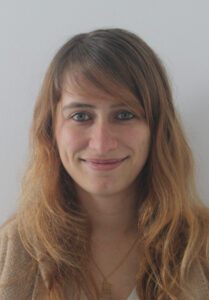Posted By: HGG Advances
Each month, the editors of Human Genetics and Genomics Advances interview an early-career researcher who has published work in the journal. This month we check in with Ozvan Bocher (@OzvanBocher) to discuss her paper, “Bridging the diversity gap: analytical and study design considerations for improving the accuracy of trans-ancestry genetic prediction.”

HGGA: What motivated you to start working on this project?
OB: Most genetic association studies are currently focusing on European populations, which creates disparities with other under-represented populations, especially when translating these studies into the clinic. Polygenic predictions are based on these studies and represent an important component of precision medicine. We therefore wanted to evaluate the performance of polygenic scores in non-European populations by taking the example of two human complex diseases and by making use of large, published studies. The kind of studies we performed is important to assess where we stand now and future directions that genetic studies need to follow.
HGGA: What about this paper/project most excites you?
OB: Two main conclusions are drawn from our study: we urgently need to rebalance the ancestry composition of genetic studies, and it is hard to find a polygenic score that is best suited in all situations. I am excited by the implications of these findings. The need to include more diverse populations highlights the new biological knowledge we will gain from studying the genetic architecture of complex diseases in these populations. In addition, the lack of a one-size-fits-all method emphasizes that much more methodological work is needed in polygenic prediction of disease risk, which should also consider environmental factors.
HGGA: What do you hope is the impact of this work for the human genetics community?
OB: The urgent need to include more under-represented populations in genetic studies is now being described by several groups. Although inclusion of individuals from these populations is increasing, so too is that of individuals from European populations, thus preventing the proportion of non-European samples from increasing. I hope this will change, and I hope that the conclusions of our work help in highlighting the key factors influencing polygenic predictions in non-European populations. In addition, this work is based on simulations for which the pipeline has been made available to the research community, and I hope this tool will help others to design future multi-ancestry genetic studies.
HGGA: What are some of the biggest challenges you’ve faced as a young scientist?
OB: I am still in an early stage of my postdoc phase, but I know that I want to work in academia. What I start to see as a challenge in the upcoming years is the low number of tenured positions. Science is a very competitive field where it is hard to get these positions and secure funding for research projects. In addition, balancing a career in academia and a personal life can be challenging, especially for women, and timelines are something that I am currently highly thinking about. I am feeling very grateful for the people with whom I have been working so far who were and are very supportive, and I am convinced that this support is a key factor in achieving career goals.
HGGA: And for fun, what is one of the most fascinating things in genetics you’ve learned about in the past year or so?
PN: I was recently amazed by a study published by Lopera et al. on Alzheimer’s disease. The authors described a very rare protective mutation in a high-risk person which largely delayed the onset of the disease, the effect being linked to an effect on the Tau protein. I think that this study is very important as Alzheimer’s disease is expected to represent a major health challenge in coming years. This work highlights the power of detecting individuals with this distinct class of mutation and is a perfect example of how genetic studies help us to better understand, and potentially treat, human complex diseases.
